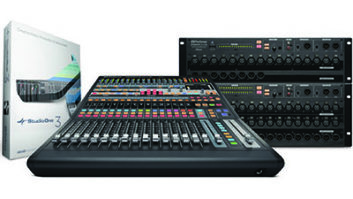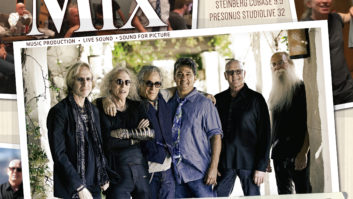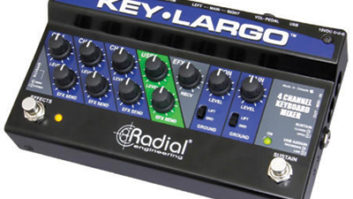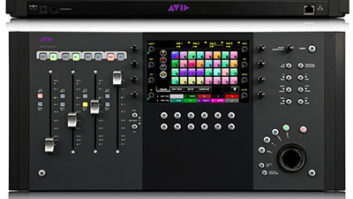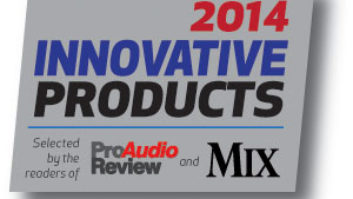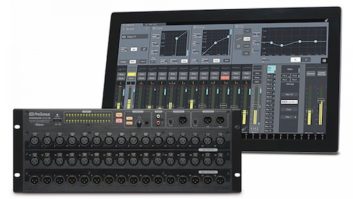When PreSonus first launched its line of StudioLive mixing consoles, the intent was to combine a feature-packed digital mixer with a multitrack recording interface, effectively allowing any live sound venue to become a studio. The multitracked performance could then later be mixed on that same console or in a DAW for a polished result. PreSonus’ prowess for digital control of analog components allows for deep recall functionality. Add in top-notch digital effects processors and you have a formidable front-of-house console that is tough to rival.
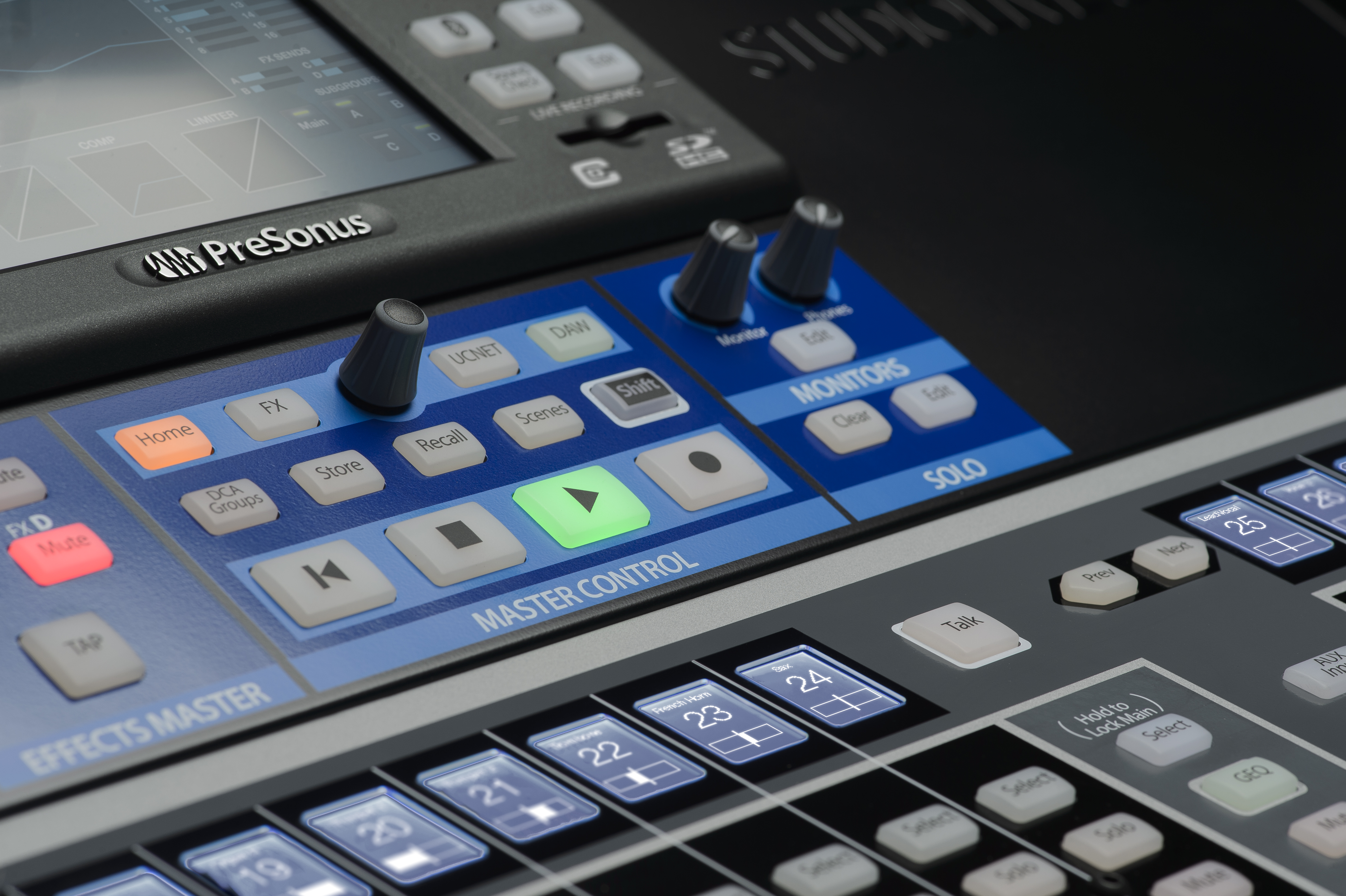
To me, however, it seemed that these mixers should be bigger than that. Imagine being a band with limited financial resources, yet able to purchase one piece of hardware that could facilitate rehearsals, self-recording and mixing projects, and that then could be a vehicle to bring the sounds of the record on tour with easy recalls at front-of-house. The StudioLive 32 has hinted at functions that would serve this multipurpose functionality since the time of its release. Those features, including the headlining “DAW Control,” which allows control surface functionality for Studio One, have arrived.
The Hardware
The frame of StudioLive 32, while slightly narrower than an Avid C|24, has a similar gravitas as a centerpiece of the room. The 33 touch-sensitive, motorized faders have a large scale and a solid, sturdy feel, which is appreciable, especially given the price point. Countless rubberized softkeys that dot the surface of the top panel are backlit with multi-color LEDs, able to take on hundreds of colors, customized by the user, to reflect their changing roles across different layers of functionality.
Monochrome LCD displays on the scribble strip and effects section typically provide enough real estate to display channel names and parameters without truncating them to the point of unintelligibility. The large 7-inch color touchscreen display is reliably sensitive, rarely requiring a second press to get your point across. While the rotary encoders and analog knobs are capped with rather pedestrian plastic knobs, their performance is smooth and accurate.
Under the hood, the mixing architecture is quite robust. The mixer can see up to 40 inputs, which can accept signals from a variety of sources. First, there are the 32 rear-panel XLR jacks, all of which feature XMAX preamps, and half of them adding a 1/4-inch balanced line-level option via combo jacks. These are accompanied by a variety of auxiliary inputs and tape returns on the analog side.
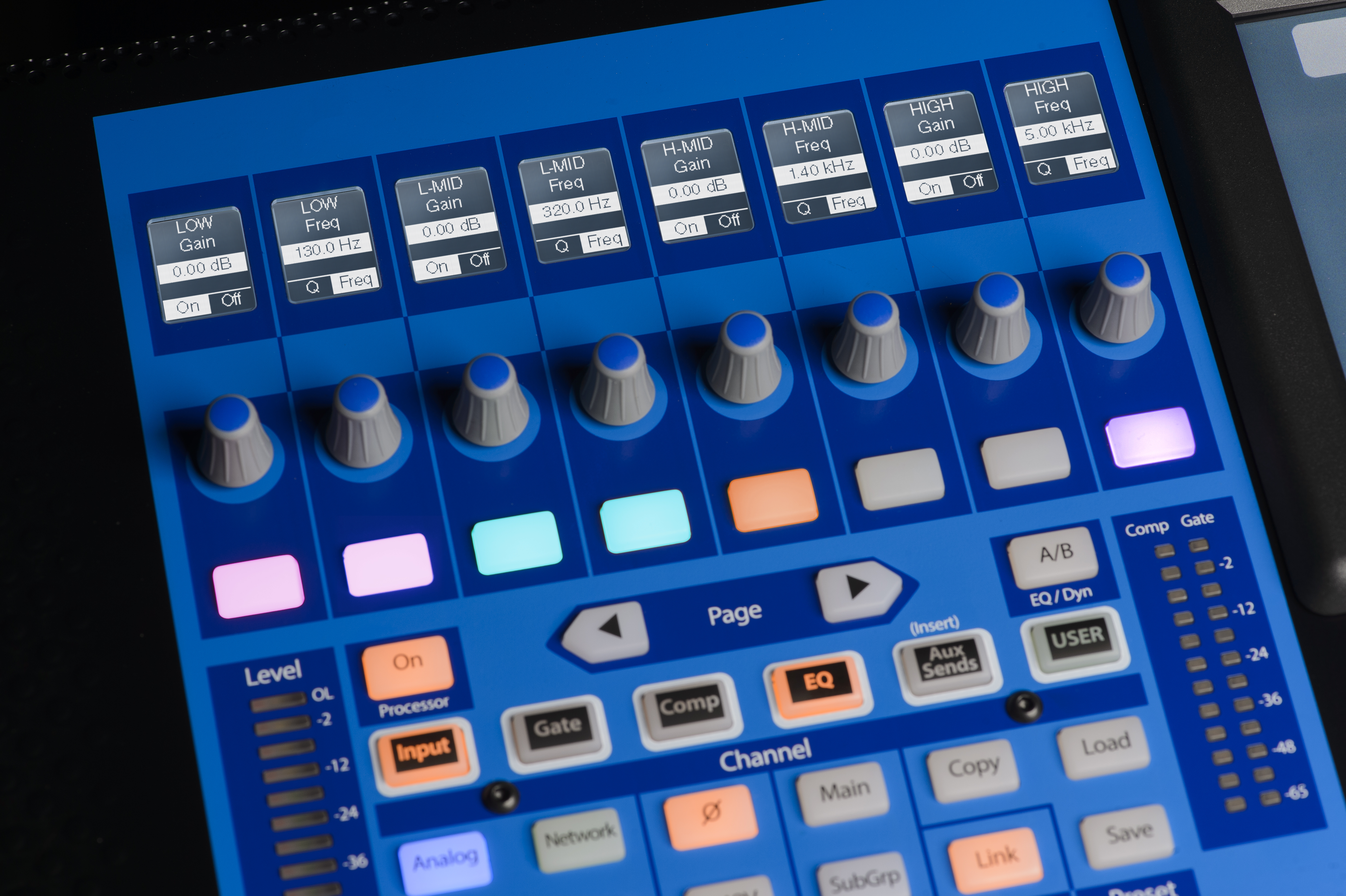
The mixer can be integrated into an AVB network, so input channels can accept signals from a digital snake. PreSonus offers a variety of products at different scales featuring preamps that can be remotely controlled by StudioLive 32. This mixing console can also act as a 40 x 40 USB 2.0 interface at a fixed sample rate of 48 kHz, so a DAW return can be selected as the input for any given mixer channel.
Review: PreSonus StudioLive AVB48AI Mix System, by Steve La Cerra, April 11, 2017
Each of these inputs can be routed to a wealth of destinations. Just about every routing function is user-customizable using the digital patchbay, so while a few physical connectors are permanently tied to particular buses, the majority of connectors can be repurposed to suit a user’s needs.
For example, while the main mix bus will always feed the main XLR output pair to feed the house P.A., it can also feed the integrated headphone jack, dedicated connectors for nearfield monitors, a stereo AES/EBU send to mix-down recorder, and variety of other XLR, 1/4-inch TRS and RCA output pairs.

Alternatively the headphone jack, AES/EBU output, the 16 line-level “mix” outputs and other “tape outs” can pass signal from a number of customizable buses. The console’s 16 mono “Flex Mix” buses can be used for your choice of monitor mixes, effects sends, processing subgroups or matrix mixes. These grouped signals can be routed or multed to any combination of physical outputs, digital output or be used to feed signals to faders or effects within the console’s architecture.
Additionally, the mixer has a built-in multitrack recorder that can write to an SD card. Without any robust editing features, it is geared more toward capturing live performances; however, the ability to overdub and punch makes it a modern “Portastudio” for hotel room demos on the road. The tracks can be played back directly from the recorder into mixer channels. PreSonus also recommends using this SD card multitrack playback function for “virtual soundchecks.”
DAW Integration
All of the advanced routing and recall features, combined with a healthy selection of built-in dynamic and time-based processors, make the StudioLive 32 an impressive live mixing console, but what really intrigued me is the potential for the mixer to take center stage in a recording studio’s control room. Quickly after the console’s release, little bits of DAW integration started popping up, particularly when the unit is paired with Studio One.
Two-way communication between the console and the DAW came early, in the form of mic preamp control. A control in the DAW’s channel strip could adjust the console’s preamps in real-time, and recall their settings when opening a session. Reciprocally, the console’s preamp control updated this value in the DAW. Next came the ability to link Fat Channel controls between the console and plug-in versions inserted on corresponding DAW tracks. Why would that be useful?
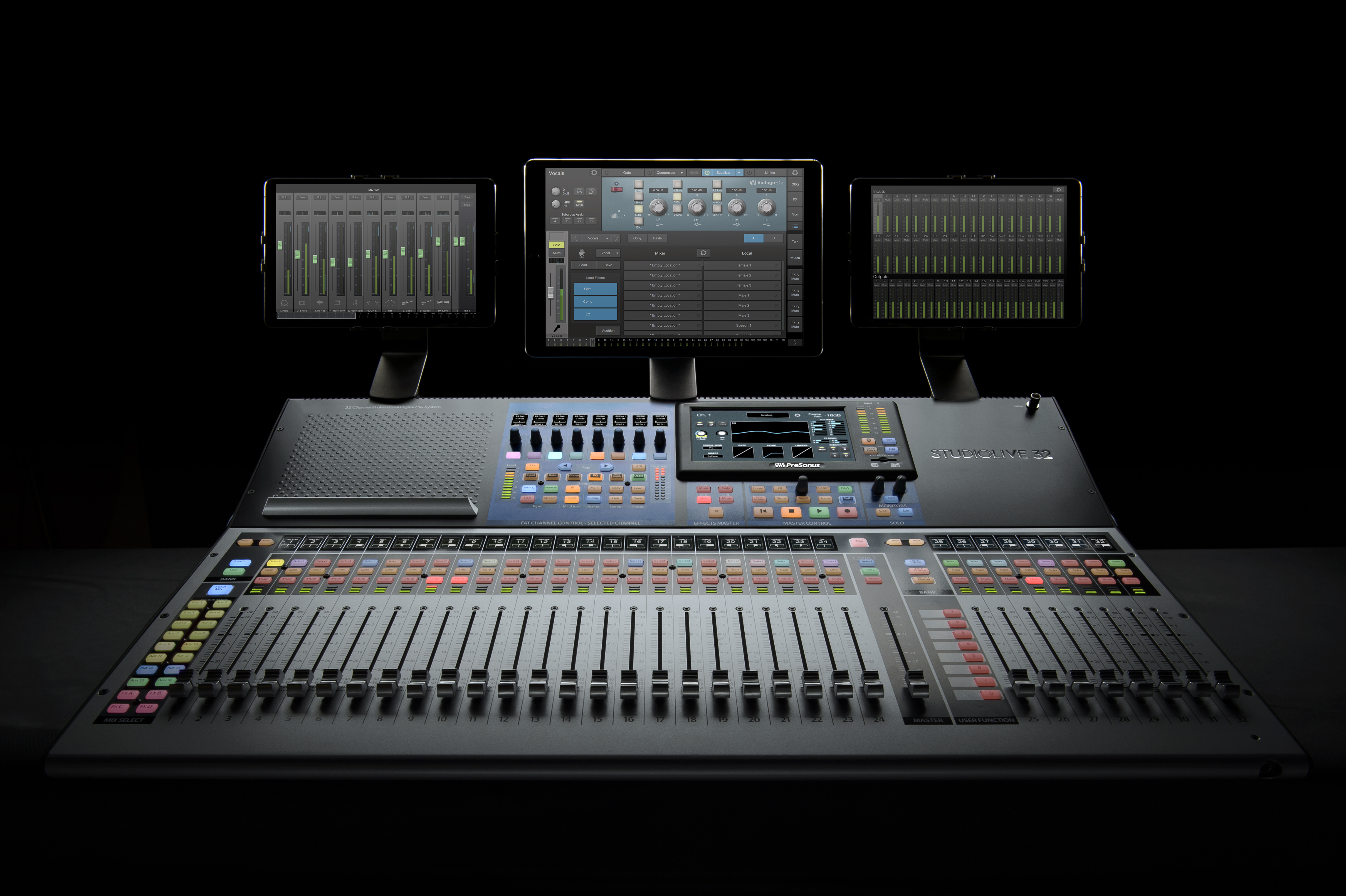
I still have not seen overwhelmingly descriptive instructions for establishing a tracking workflow with the StudioLive 32 and Studio One, so I have created a workflow that seems practical to me. Running the console in sort of a split-monitor fashion has proven to be the most logical. I’ll use the first 24 channels as “source faders,” allowing their preamps to feed the DAW, and then monitor DAW returns using the eight faders to the right of the master. I’ll feed the DAW track outputs to the first pair of DAW returns, and then send to three more stereo pairs for headphone mixes, building custom mixes within the DAW.
PreSonus StudioLive 24.4.2AI Mixing Console: New Features, Solid Sonics and Wireless RC, by Steve La Cerra, Aug. 1, 2014
By grouping the auxiliary “mix” buses into stereo pairs and pushing up the faders for each DAW return pair on a separate “mix” bus page, the different DAW return pairs can be fed through unique stereo XLR output pairs, off to individual headphone mixers for each artist. When dense, CPU-hungry sessions require additional hardware buffering to the point where round-trip latency might be introduced, the mixer behaves like a more tactile version of the UAD Console application. In this case, low-latency input signals can be fed to the main mixer or cue mixes using physical faders, and these signals will be combined with the given cue mix’s DAW return.
In these cases, the choice can be made as to whether Fat Channel dynamics will be printed to the DAW or merely be monitored across these low-latency headphone mixes. If they are just being used for monitoring purposes, it becomes quite handy that their settings can be passed to the DAW’s Fat Channel plug-ins, allowing in-the-box mixes to pick up the sounds heard during tracking. As far as I know, UAD doesn’t currently allow effects settings to be linked between a DAW instance and a Console insert. With StudioLive 32, this functionality is handled with a high level of flexibility, as the linking can maintain itself even as the position of the effect moves back and forth in the signal flow between the console’s output and the DAW’s mixer.
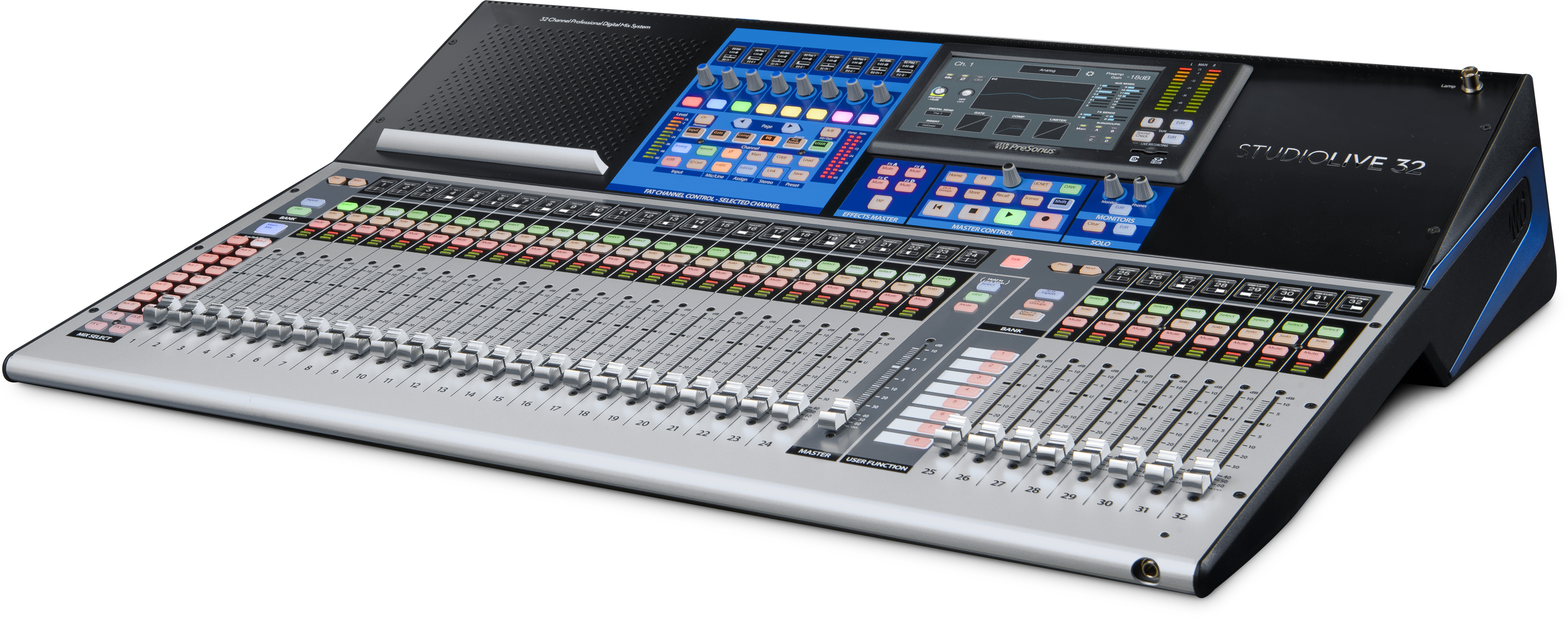
Even with slick functions like the preamp controls and Fat Channel linking, I still felt like I was mousing around too much, considering the large piece of hardware in front of me. When DAW Control finally became a reality, it was the missing piece that my workflow was seeking. After performing the required networking routine, toggling between standard console mode and control surface mode could be accomplished with the push of a button.
On a basic level, the built-in transport functions were a really handy upgrade when DAW mode took effect. Moreover, the ability to mix the DAW tracks that were feeding the stereo pairs of DAW returns was incredibly useful. Each Studio One aux send position could be accessed as a different layer of faders on the console, so flipping between each artist’s headphone mix on the DAW side was really convenient.
Granted, to add in pre-DAW sources required a flip back to console mode, and then a trip to appropriate auxiliary layer. However, when tracking with most interfaces, the same is true as you’ll have to toggle to a different application to address the zero-latency headphone mixer, and then back to the host DAW. The StudioLive 32 proved far more ergonomic, as everything was being addressed on physical faders.
Want more stories like this? Subscribe to our newsletter and get it delivered right to your inbox.
Adjusting effects also became available in DAW mode somewhat, but the functionality seemed to be a work in progress. On the console side, each element of the Fat Channel effects chain, from the gate to the EQ, compressor or limiter, could be called up with a dedicated button. A plug-in GUI filled the touchscreen, and a particular parameter could be tapped and quickly controlled with a universal rotary encoder. At the same time, all of the parameters of that processor could be quickly addressed with a set of eight rotary encoders, with eight illuminated buttons and an eight-panel scribble strip. If there were too many parameters, multiple pages could house all of the settings.
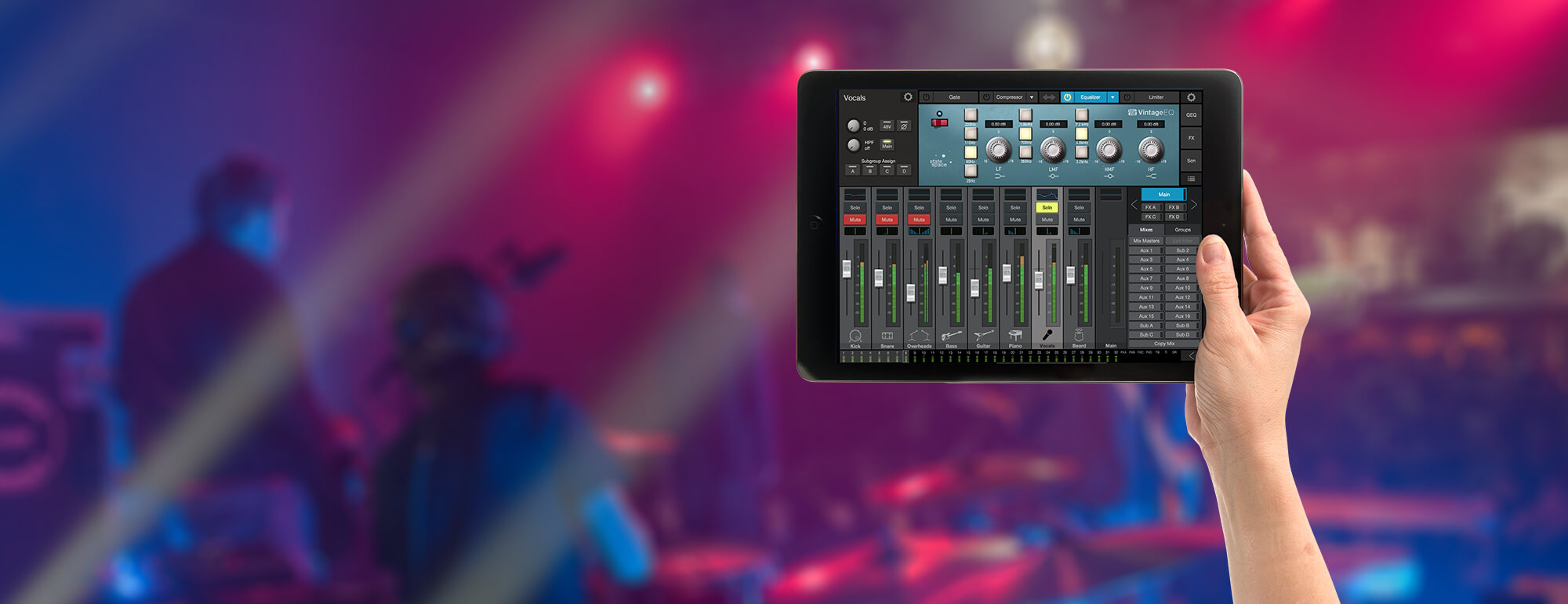
On the DAW side, selecting a Fat Channel plug-in insert did not load its graphics onto the touchscreen. Though the parameters were loaded onto the same section of controls as they were on the console side, the dedicated buttons for flipping between plug-in sections were not functional. As a result, all of the sections were loaded onto the controls at once, with a good number of them being left out. I experienced similar results with other PreSonus plug-ins, while third-party plug-ins were simply ignored rather than loading unpredictably onto the physical controls. To that end, it was generally simpler to address effects with a mouse.
All in all, the mic preamps sounded great on everything that I tracked. The Fat Channel plug-ins sounded really nice, too. The processors offered a variety of modes for different flavors. The EQ could do Q10-style precision sculpting, but brought more character with Pultec and Neve 1073-style models. Likewise, the compressor had LA-2A, 1176, and modern plug-in variations. A recent update added some new free selections, as well as a number of additional models available for purchase.
Alt-J Tours with PreSonus StudioLive Digital Mixer, May 7, 3013
Sonically, the unit certainly delivered, and with all of the routing options and connection types, the mixer proved to be incredibly powerful. For tracking purposes, getting my head around a workflow wasn’t necessarily a breeze, but once I got it, it became extremely user-friendly. Having two hands on big, accurate faders for every layer of a mix and brightly illuminated buttons to guide the way was pretty luxurious. If you are looking for an all-in-one console, interface and control surface, this is a really impressive option.
Product Summary
Company: PreSonus
Product: StudioLive 32
Price: $2,999.95 (street)
Pros: Great-sounding preamps and built-in effects. Control surface for Studio One.
Cons: Control surface functions currently apply to Studio One only.
